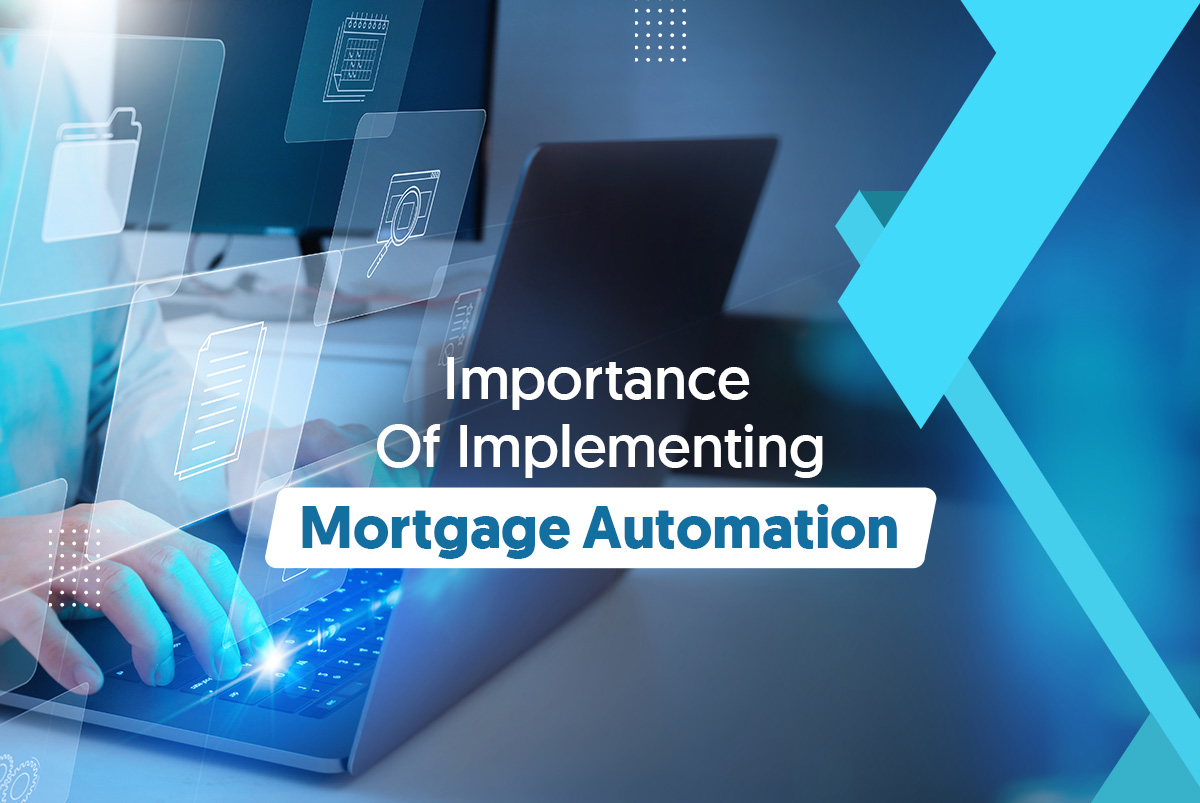As part of the pandemic-hit mortgage industry, a 5-year-old New York-based mortgage lending company found itself in deep water for most of 2020. With its presence in 10 major states across the U.S. and operating with over 200 employees, it was a promising direct lender with revenues nearly doubling every year. As a considerably new firm, its customer service was surprisingly comparable to that of the industry-leading players.

However, the effects of the country-wide spread of the pandemic were felt by the company too, forcing it to cut down on operations. The drying revenue streams and dwindling opportunities made matters worse, forcing the management to resort to cost-cutting measures like employee lay-offs. What’s intriguing is that the company had adopted business technology before the onslaught of the pandemic. However, while the efforts of digitization were there in the pre-Covid-19 days, they simply were not enough, as proved by the crisis. This lender’s case is identical to many others in the industry who suffered from their half-hearted attempts to revamp the archaic, manual ways of conducting operations.
| As per a survey of homebuyers and lenders, 81% of consumers prefer signing their loan documents electronically. |
So, What Made Things Go Spiral for the Company?
A Sudden Spike in the Flow of Loan Applications
For this young company, the drastic drop in the interest rates of mortgage loans resulted in more individuals wanting to purchase homes. Low rates of lending save thousands of dollars for the borrower, creating a massive surge in the demand for mortgage loans. However, as a lender in its nascent stage, it wasn’t prepared to take on any sudden spike in operational demands. Another factor adding to the challenge was the remote working policy that was forced on the lending sector. With the management and workforce clearly unprepared for such a massive shift, operations were bound to crumble.
Mortgage businesses must be able to respond smoothly to this sudden surge in demand with appropriate retuning of their operations.
Also Read: Mortgage Digitization – Why Lenders Need to Get Onto it Right Away
| Record low interest rates in the U.S. have already driven home sales to a 14-year high and caused an annual increase of 200% in refinancing. |
The Need for Stringent Qualification and Screening Procedures
For the company, the flood of applications opened another frontier of challenge i.e., dealing with the rising instances of fraud. It lacked the critical tool of a fool-proof scrutiny process for applicants. It desperately needed a digital way of verifying and managing applicant documents, liaising with external stakeholders, and verifying credit scores. With massive job and income losses throughout the pandemic, it needed thorough proof of stable income as well as larger down payments.
For error-free eligibility verification, lenders must adopt the same digital infrastructure that competent online mortgage brokers use.
| In March 2020, mortgage rates were slashed by the Federal Reserve to stimulate the economy. Interest rates fell to the lowest levels ever, continuing the trend into 2021, with the rate still dipping below 3%. |
The New Dynamics of the Industry
The pandemic has uprooted several assumptions and practices prevalent in the industry before the crisis. For instance, the new normal has established remote work as a widely accepted reality for lenders. And to deal with each of these challenges, this young lending firm had to bank on a remote workforce – a hitherto unfamiliar concept – and maintain high-level performance as expected in offices with a physical presence. Training and equipping its employees to conduct operations virtually while maintaining the expected levels of quality and consistency was not feasible amidst the chaos in the industry. Furthermore, the demand for first-rate, personalized customer service skyrocketed and the lender failed to ensure the delivery of quality assistance it was known for before the crisis.
Structural and wide-scale changes such as a virtual work setup and an omnichannel service model are possible with a competent, tech-backed mortgage BPO service provider.
It Would Have Been a Different Story Had the Road Been Taken
Each of these challenges could have been averted by the lending company with sophisticated tools that form the cornerstone of modern-day mortgage digitization. Practices such as eSigning, e-Closing, online appraisal, and remote underwriting and authorization should have been part of its operational arsenal. The need of the hour is to expedite the pursuit of cutting-edge solutions to keep up with the evolving landscape.
What such lenders need today is accuracy in data and error handling, an easily scalable processing setup, faster turnaround times for quicker closing of files, and operational flexibility. Cost-effective operations and efficient customer experience remain the coveted goals of any lending business.
| In a survey, 99% of lenders said they believe technology can improve the mortgage application process. They cited benefits like simplification of the entire process (74%), reduced time to close (70%), and minimized data entry (67%). |
Enhanced Data Management
Most mortgage teams must deal with a massive flow of information generated from their interactions with loan applicants. Without a data management system in place, the information and documents resulting from such interactions may prove overwhelming for the team to manage. This is where a digital data extraction engine like the MSuite comes to the rescue of the lender. It extracts data points about the income, asset, insurance, collateral, etc. from the applicant, converts it into a predefined format for easy reading, and organizes and stores it in a cloud-based location. This is done while ensuring 100% accuracy for data points, ensuring optimal lending outcomes.
Strict Adherence to Operating Rules
Given the upcoming stringent policies that lenders would be subjected to, it is critical to have a digital setup in place that ensures complete adherence to the prevalent company rules. The ideal tool is a digital and dynamic engine that helps manage thousands of rules effortlessly. Such a versatile rule engine can be customized for only the rules that are needed for a particular task or process. One such tool is MSuite that automates distinct tasks, including a thorough review of loan servicing and underwriting files with specific borrower profiles.
Leveraging a Robust Reporting Engine
Besides the daily operational challenges, lenders must have an eye on the future and should be able to predict what awaits them in the upcoming months. Such a capability would also help them prepare for another nightmare like the Covid-19 catastrophe. To this end, MSuite provides data-backed reports and trend analysis of the market that encompass critical parameters pertaining to specific business needs. The tool can be used for generating reports on all data points that are being stored in the system.
Appealing Economics
Although the remaining days of the year would hopefully bring new opportunities to lenders, they must keep their operating costs in check, especially after emerging from a colossal economic setback. To realize that, they must adopt automation to streamline the workflows and attain quicker turn times on routine tasks. The process of making changes to document placeholders and other such manual tasks must be automated and mapping of data points within the LOS (Loan Origination System) must be effortless. Furthermore, when the solution adopted for the above tasks carries minimal/zero implementation, fixed, and/or upfront costs, it reinforces the savings of the lender and sets them up for the competition.
Reimagined Customer Service
Successful lending starts with superior customer service. People are moving to a consumer-direct transaction model owing to the crisis and the inability of lenders to meet with customers the same way they used to. To communicate with and genuinely serve their customers, lenders must personalize touchpoints throughout the lending cycle while making the engagement relevant to the prospect’s requirements. This is possible only with data intelligence that makes information and outreach highly personal, relevant, and timely. Better contact can be established with customers by introducing multiple lines of communication including text, online apps, social media, email, etc.
| A 2020 survey claims that the importance of lenders that offer digital solutions like online applications grew for borrowers with 58% saying an online application affects their lender decision (rising from 50% in 2018). |
The current market conditions suggest that better times have already arrived for the mortgage industry. However, there are a few prerequisites that lenders must meet to cash in on the opportunities. The most crucial among these is the need to recalibrate their workflows and performance through a combination of innovative and intelligent technologies, and a capable and motivated workforce. The right digital solution would enable the automation of tasks like underwriting and applicant verification while fostering drastic improvements in customer service.
Who We Are And Why Our Expertise Matter
Expert Mortgage Assistance (EMA) is known for its back-office digital solutions that are in tune with the changing face of the industry. As a highly bankable mortgage BPO services firm, we leverage our proprietary mortgage tool MSuite to upgrade the mortgage ecosystem for higher efficiency. Our end-to-end solutions have assisted lenders realize substantial savings in operating costs.







No Comments